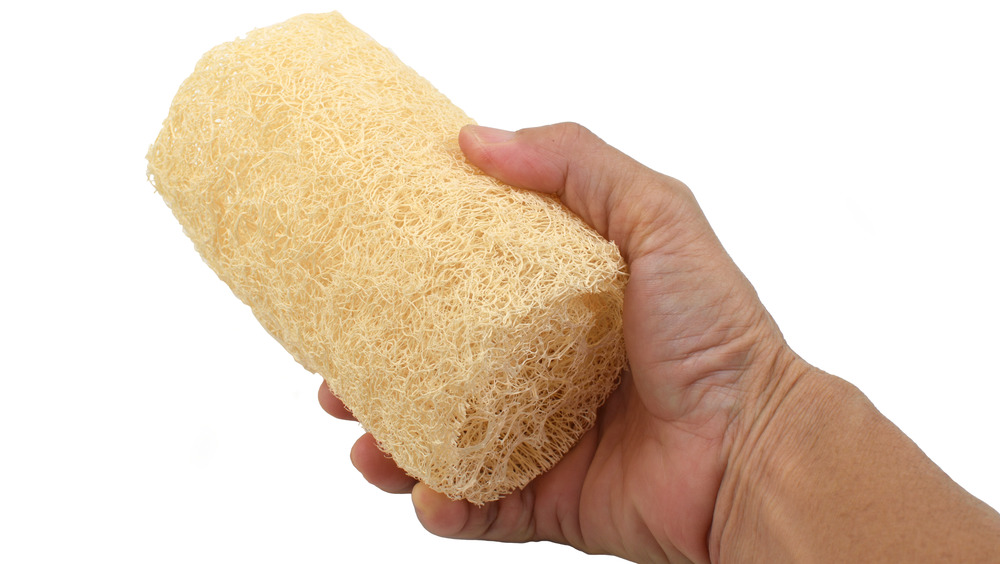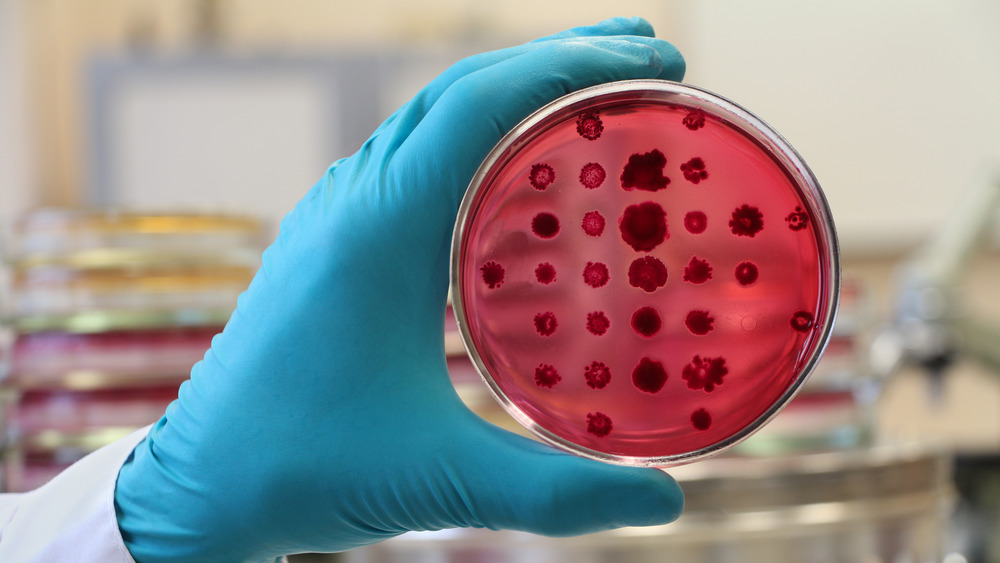This Might Make You Want To Throw Out Your Loofah
While thoroughly exfoliating your skin may not be a novel trend, new products have hit the market to make the job easier and more effective. But one of the tried and true products for giving your skin a fresh glow is the loofah. While this bath sponge has plenty of beauty benefits, you might be surprised at what experts say about using one.
Exfoliating your skin can be done in lots of different ways. You can mechanically exfoliate using a gentle sponge, a specially designed brush, an exfoliating glove, or even a soothing scrub (via Healthline). Chemical exfoliation can be trickier and uses alpha- or beta-hydroxy acids to break down the dead outer layer of skin cells to reveal the new skin underneath. Even within these categories, numerous tools are available to help you slough off dull skin.
What you can't see might hurt you
Naturally-formed loofahs are an attractive choice for exfoliation because they don't contain synthetic materials and can be sustainably produced. They're often sold at health food stores and marketed as a greener alternative to mesh sponges. Loofahs are made from the luffa gourd, a cucumber-like plant that is harvested and then dried into a sponge. The coarse texture makes them great for scrubbing and improving blood flow. But as you exfoliate, dead skin cells can clump up in your loofah, and that can create the perfect environment for bacteria growth.
Unless you dry your loofah after every use, the warm, moist environment of your bathroom allows bacteria to breed on the sponge. If you scrape your skin during the exfoliation process, bacteria like E. coli can be introduced into the tiny microabrasions (via Journal of Clinical Microbiology). While E. coli is naturally occurring on your body, it can become dangerous when transferred to the wrong place like a cut or scrape.
So what should you do to prevent a nasty bacterial infection? Start by drying your loofah completely and storing it somewhere other than your bathroom where it's not exposed to heat and moisture. Disinfect your loofah frequently, and replace it at least every three to four weeks, or at the first sign of mold or mildew (via Cleveland Clinic). Your best bet, however, is to skip the loofah altogether and go for something that's easily cleaned, like a washcloth.


